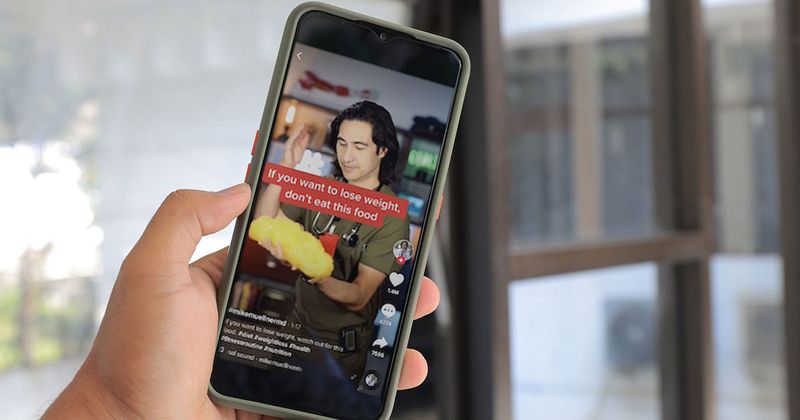Most-viewed TikTok content on nutrition is ‘weight normative’
The most-viewed content on TikTok related to food, nutrition and weight focuses on weight-normative messaging, according to a study published in PLOS One.
Lizzy Pope, PhD, RD, associate professor and director of the didactic program in dietetics at the University of Vermont College of Agriculture and Life Sciences, told Healio that she and Marisa Minadeo, an undergrad student at the time, began to consider TikTok’s effects on how users saw their weight and whether the content was weight normative or suggested that health is possible only at a specific weight, or weight neutral, which encourages less of a focus on BMI.

“We were wondering if the content we were seeing was representative of what was commonly seen on TikTok,” Pope said. “It was at the beginning of the pandemic, and so a lot of people were discovering TikTok for kind of the first time. We were really interested in what one would see there.”
Pope and Minadeo examined more than 1,000 TikTok videos and created a list of common food, nutrition and weight topics that could comprise hashtags on the website.
“From there, we looked to see which hashtags had the most views and chose the 10 with the highest number of views that represented a mix of content,” Pope said. “We then took the 100 most viewed TikToks in each of those 10 hashtags and coded them for themes.”
Minadeo and Pope began their analysis in 2020, at the beginning of the COVID-19 pandemic and in the midst of TikTok’s user base growing dramatically. They assessed posts using the hashtags #bodypositivity, #diet, #fatloss, #mealprep, #plussize, #weightloss, #weightlosscheck, #WhatIEatInaDay, #WeightLossJourney and #nutrition.
“On my personal TikTok feed, I saw a lot of body-positive, weight-inclusive content,” Pope said. “So, I thought maybe we would see more of that, but we saw so much content that glorified weight loss and saw weight as a health behavior [and] that everyone should be able to achieve a ‘normal weight.’ We were kind of surprised at the level of content that we saw that revolved around weight.”
The results indicated that most of the content chosen for analysis was created by college-aged users at 42.4% and high schoolers at 11.1%. Millennials created only 28.2%, whereas those in middle age created only 3.3%. The ages of the creators could not be determined in the remaining 15.2% of posts. Nearly two-thirds of the videos (64.6%) were created by female-presenting users, whereas 30.4% were created by male-presenting viewers.
In terms of content, nearly 44% of the collected videos in the study contained weight loss content, whereas 20.4% explicitly showed a weight transformation within the video. Roughly 22% depicted physical activity, and 38% explicitly showed food, with 11.9% featuring active cooking. About 14% mentioned a specific diet or dieting, but only 1.4% of the videos were created by registered dietitians.
Certain videos stuck with Pope.
“One video that I can think of [involved] a young woman who was saying that [one] could become thin and muscular by doing five abdominal exercises for 15 minutes a day, and then she proceeded to show the ab exercises,” Pope said. “As someone who studies weight, bodies and how they change, to think that five exercises every day are going to help you to lose 30 pounds, and that’s all that is necessary — that was one that stood out to us. The level of misinformation about how achievable weight loss is for people is unreal.”
Additionally, the sounds used in the videos, Pope noted, often portrayed well-meaning but harmful messages.
“TikTok is all about taking a sound and then putting content to it,” Pope said. “The sounds that some of the weight loss videos would use messaging that I think were meant to be motivating, [saying things like] “You can do it, there's nothing stopping you.” But when you know that 95% of diets and weight loss attempts will fail over 5 years, when you know that, in fact, it's not easy to change your body size, that messaging can be harmful.
“I could see, as a viewer watching those, you might start to feel badly about yourself if you haven't been able to lose weight, and then you're watching all these videos that are making it seem really easy.”
Pope added that it was important for primary care practitioners and pediatricians to familiarize themselves with the content.
“It's important for health practitioners who work with young people to know that this content is out there, and this is what they're seeing predominantly,” Pope said. “Young people are seeing this content, their friends are making the content, they themselves are seeing this content.”
References:
Minadeo M, et al. PLOS One. 2022;doi:10.1371/journal.pone.0267997.
